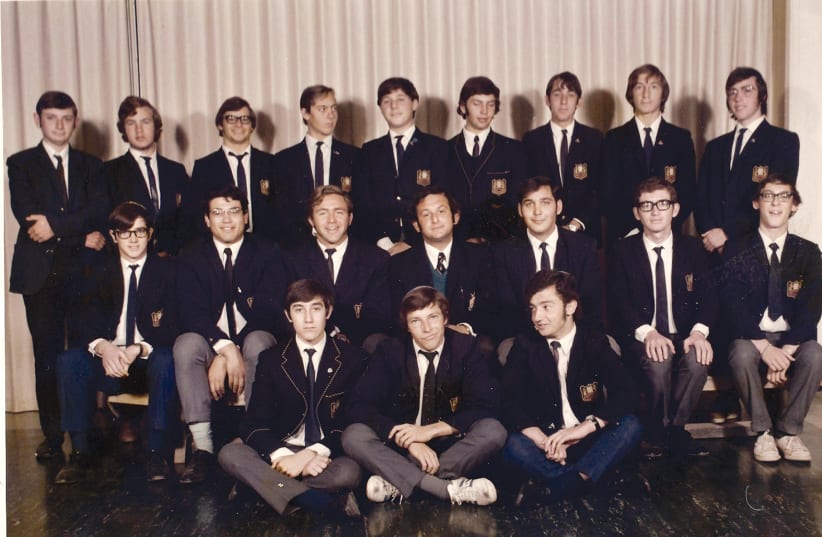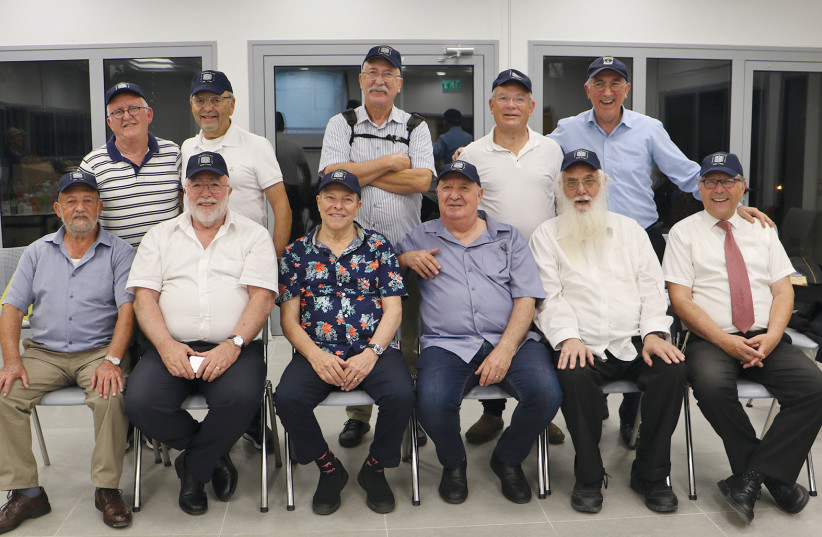Throughout this past year, graduating school classes of 1972 around the world have been assembling for 50th anniversary reunions.
These get-togethers are generally laced with nostalgia, joy and, in many cases, sadness as well, given the reasonable assumption that groups consisting of 67-year-olds have lost peers to disease or unnatural death.
While these gatherings are ubiquitous and rather esoteric, the recent celebration of Johannesburg’s Yeshiva College Class of 1972 is unusual because the course of their school years and subsequent lives so eloquently describes the significant historical changes that have taken place in both South Africa and Israel over the years.
South Africa and Jews
In the 1950s, Jewish children in South Africa were born, in the main, to immigrants from Eastern Europe or their first-generation children. At the time, the characteristics of this some 100,000-strong, distinctive community included an extremely powerful commitment to the clan, with the vast majority belonging to Orthodox congregations. On the other hand, adherence to Jewish law and Jewish study was extremely limited and confined to the families of the rabbis, cantors and beadles, and a small minority of lay people.
Jews had migrated predominantly in the late 19th and early 20th centuries, fleeing the pogroms and poverty of Eastern Europe. Sailing into Cape Town without funds and without professions, many of them began their new lives as itinerant merchants, procuring basic wares in Cape Town and Johannesburg and supplying them to farmers and local village people in the hinterland. Over time, when they had accumulated savings, they established general stores in these little towns, settled down, and encouraged others to join them. As a result, by the mid-20th century, dozens of small communities were dotted around rural South Africa, in addition to the major concentrations of Jews in the big cities.
On one hand, as committed Jews, they prioritized building synagogues. On the other, as per the Jewish ethos, they were determined that their offspring would have a life with more opportunities than they had. To do so, they would have to provide them with an academic and Jewish education available only in the big cities. Thus their understanding that their stay in these small towns would be temporary.
And so it was that the said 12th grade class of 1972 consisted of 21 young men, evenly distributed between “Joburgers” and boys from the countryside, who dormed at the on-site “hostel.” Three of their fathers served as rabbis in those small communities, and others were shopkeepers and the like. The group was far and away the largest of its era. None of those “hostel boys” were destined to return to the rural communities where they had spent their early years. Almost all of these boys entered either academic or rabbinic studies.
THE SCHOOL itself reflected the sea change that was taking place within the Jewish community. Founded in the mid-1950s by a small dedicated group of religious Jews, it had struggled to survive with a tiny enrollment as the only religious Jewish school in the entire country. But as those same boys came of bar mitzvah age, a seminal event would change the face of the community and many like it around the world.
The Six Day War and the resulting reunification of Jerusalem sparked an awakening of Jewish spirituality in a society that was already renowned for its Zionist ethos. Lay people became interested in Judaic studies and observance. The religious Bnei Akiva youth movement grew by leaps and bounds, and a number of those classmates played key roles in the leadership of the flourishing movement.
Then, in 1978, the White, Apartheid regime which had ruled the country with an iron fist was rudely awakened by the Soweto Uprising, which precipitated a progression that would culminate in the eventual release of Nelson Mandela in 1990 and the establishment of democracy in 1994. Like many of their white counterparts, Jews began to leave the country in droves, mainly to English-speaking countries around the world.
With the additional option available to the Jews, many grasped the historic opportunity and realized the dreams of their ancestors by settling in Israel. They included 12 of the Class of 1972, a proportion which, to my knowledge, is unparalleled. Seven of them would be among the first pioneering group of 50 families which in 1983 settled in the Israeli settlement of Efrat, whose ideology matched their own. Efrat is now a thriving town, but the influence of the South Africans is palpable to this day. Four migrated to the US, and of the five who remained in South Africa, three became rabbis as did two of the Israeli contingent. The others included dentists, accountants, engineers, businessmen, computer experts, an urban planner and a farmer in the Jordan Valley. Interestingly, there are no lawyers or doctors in the group.
The demography of South African Jewry today reflects all of these developments. The level of observance and Jewish knowledge among the seriously diminished group of 45-50,000 souls is exponentially greater than it was 50 years ago. Yeshiva College, which has five times the enrollment that it had in those early years, is just one of many educational institutions of its kind.
As for those precious small town communities, by the design of the very people who established them, they survive only in the memories of those who spent their formative years there. It is to the credit of the caring South African Jewish community that many of the beautiful synagogues and holy cemeteries are preserved in pristine condition to this day.
Most of the boys of the Class of 1972 have remained in close contact through the decades. Of the 18 surviving members, 11 recently attended a memorable get-together at Ein Gedi, two flying in from Johannesburg and one from Los Angeles. Over 100 of their grandchildren are in the army, perform National Service or are in schools and kindergartens around Israel. And the first great-grandchild was born recently.
The closeness forged among these young lads now entering their latter years continues to blossom. Beyond the natural bonds forged by teenagers, a subliminal sense of destiny emanating from the times of their lives makes the kinship among the boys of the Class of 1972 all that more significant. ❖
The writer produces heritage films for people wishing to pass on their stories and values to future generations. He is a proud member of the YC Class of 1972.

